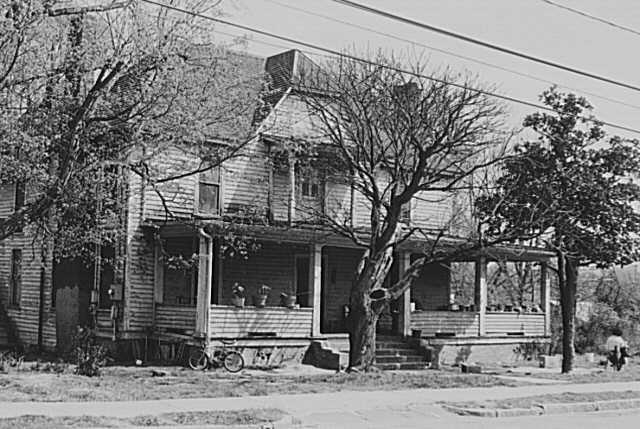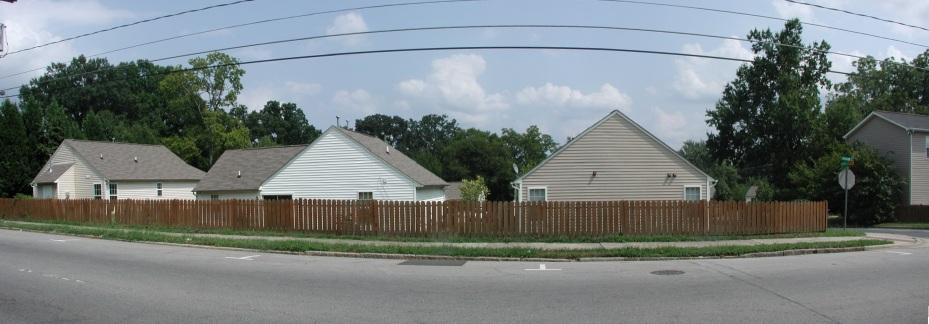Support OpenDurham.org
Preserve Durham's History with a Donation to Open Durham Today!
OpenDurham.org is dedicated to preserving and sharing the rich history of our community. Run by our parent nonprofit, Preservation Durham, the site requires routine maintenance and upgrades. We do not ask for support often (and you can check the box to "hide this message" in the future), but today, we're asking you to chip in with a donation toward annual maintenance of the site. Your support allows us to maintain this valuable resource, expand our archives, and keep the history of Durham accessible to everyone.
Every contribution, big or small, makes a difference and makes you a member of Preservation Durham. Help us keep Durham's history alive for future generations.



Comments
Submitted by Anonymous (not verified) on Tue, 9/5/2006 - 11:45pm
you are very talented with piecing together your pictures for a wide angle view! do many houses have only one sidelight like the mangum 824 house? was this single family?
what do you attribute the clipping of the gable to on 822 mangum? is this a design or functional or both feature?
The cul de sac is reminiscent of the new building down by forest hills, across from Galaxy. They round out their little site and keep out the evils by showing their behinds instead of inviting front doors.
Submitted by Anonymous (not verified) on Tue, 9/5/2006 - 11:46pm
cul de sac reminds me of new development across st from Galaxy by forest hills...they section off their area by showing everyone else their backsides.
why do you think the gable was clipped? function or form?
is the church from wake forest expanding here? do we really need more churches?
i can't recall my username/pswd right now...coco
Submitted by coco (not verified) on Tue, 9/5/2006 - 11:51pm
I like the bunny!
Submitted by Sven (not verified) on Fri, 9/8/2006 - 3:08pm
No talent involved; just computer magic. There are houses around with the single sidelight - it does seem to be a recurring theme in these pictures. I think the 'clipped gable' is purely an aesthetic feature; I can't imagine a functional use for it.
I don't know about the church expansion. It may be a church that is already in the neighborhood somewhere, but the ownership is in Wake Forest.
I like the bunny too; I'm curious whether it was a pet, a visitor and, regardless, whether it was dinner...
Submitted by Joe (not verified) on Sat, 9/9/2006 - 8:35pm
The "clipped gable" is also called a "hipped gable." I went looking for information; apparently it's also called a jerkinhead, which sounds slightly obscene. :)
The link above says that sort of gable is characeristic of Stick style houses, but I can't find any such indication in my copy of A Field Guide to American Houses (BTW, anyone with any interest in house styles would love the above book; there are even some Durham examples in it, which is kinda cool). The house Sven shows with the feature doesn't look like a Stick-style house, either, but I guess that doesn't necessarily mean much.
Anyway, the hipped gable (IMO) looks like some sort of medieval holdover to me, like the rolled edges one sees on some roofs being a holdover from when roofs were sod? I'm just speculating, of course. I'm not an architect, nor do I play one on TV. :)
Submitted by Sven (not verified) on Sat, 9/9/2006 - 9:21pm
Thanks Joe, for the info. I've definitely never heard the term 'jerkinhead'. Sounds sort of like an insult.
I do think the hipped roof motif is reminiscent of a medieval/thatched roof. Looking at some examples on the website you linked make it seem less odd; I guess the rest of the house is so classically North Carolina that this alteration seems to really stand out.
Submitted by Joe (not verified) on Sun, 9/10/2006 - 8:09pm
WRT "Historic District protection": It seems to cut both ways. In Watts-Hillandale, some people did as much renovation as possible before the H.D. protection came about. And some people wanted the H.D. protection mainly so (I'm told) the city couldn't do anything to Club Blvd., like make it four lanes or the like. Basically I got the impression (like with Trinity Park) that many of the homeowners were acting like spoiled brats and using the presence or absence of the H.D. protection simply to further their own aims and increase their own property values; it didn't seem to have much to do with historic preservation. I think the person who put the colored bathtubs in their front yard on Club Blvd. is a hero. ;) By the way, I've lived in both neighborhoods (on Watts St. and Club Blvd., to be precise), and I know most the vast majority of residents of both neighborhoods aren't spoiled brats. :)
It also seems like some or most of Trinity Park actually deserves H.D. protection and (from what you say) doesn't have it, while Watts-Hillandale (IMO) doesn't deserve H.D. protection, but has it. Anyway, I'm now somewhat soured on the issue of H.D. protection in some cases, like I'm somewhat soured on the value of some neighborhood associations.
Maybe I'm geographically somewhat off-topic here: sorry.
Submitted by carphone (not verified) on Mon, 10/2/2006 - 4:27am
i have always felt that the house with the windows removed looked like it was blind. it always makes me sad for it.
Submitted by Sven (not verified) on Mon, 10/2/2006 - 11:38am
It is really odd; I try to think of what reasons motivate people to remove all the windows from a house - it becomes easy to ponder the most bizarre of reasons.
It's the perfect emblem to me of what happens when you don't have, as Jane Jacobs put it, 'eyes on the street'.
Submitted by Anonymous (not verified) on Mon, 11/27/2006 - 4:54pm
Hi there, I am a neighbor of the "Blind House" and have been told that the windows were covered over it to make it more secure. Apparently it is used as a storage area... although I must admit I have no first hand knowledge of this. Although I agree that its appearances could greatly be improved upon, I am thankful that someone went to the trouble to make this house usable and that the owners maintain it. It is still there, its neighbors aren’t. CM
Submitted by Sven (not verified) on Mon, 11/27/2006 - 5:45pm
CM
Thanks for your comment. I agree that it is good that the house is still there, even with the windows removed. But it does have the effect that you describe as the motivation - the same 'bunker' effect conveyed by the cul-de-sacs. But hopefully someday the windows will be put back.
Thanks for stopping by!
GK
Add new comment
Log in or register to post comments.